Browse Houses
Search Results: Returned 5516 records. Displaying results 801 – 900
| House name | Description | |
|---|---|---|
| Belleville | John Brennan was leasing this property from William Mayberry at the time of Griffith’s Valuation, when it was valued at £14. | |
| Belleville | Built in the late 18th and early 19th century. Belleville was held in fee by Thomas Mahon at the time of Griffith's Valuation when it was valued at £30. The only part of the house remaining is the tower. |
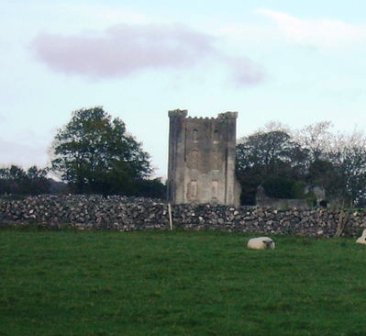
|
| Belleville Park (Affane) | George B. Power held Belleville Park in fee at the time of Griffith's Valuation, when it was valued at £39. Lewis noted it as the seat of S. Poer in 1837. Wilson, writing in 1786, mentions "Bettytville" as the seat of Pierce Power. The ITA survey states that it was afterwards occupied by members of the Tanner and Wyse families. At the time of the survey, in 1942, it was the home of Richard Keane, It is still extant and occupied. |
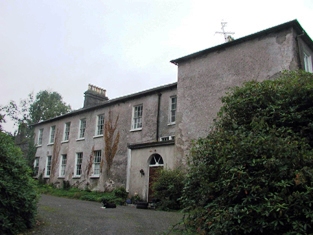
|
| Bellevue | Belview, Nenagh, was the residence of G.W. Biggs in 1814 and in 1837. The Ordnance Survey Name Books note that Thomas Sadlier was the proprietor of Bellevue inn 1840 but that it was the residence of J.W. Biggs and was " a commodious house". Samuel D. Biggs was the occupant at the time of Griffith's Valuation. He held the house valued at £30 with 315 acres from Thomas Sadlier. Samuel D. Biggs was still resident at Belview in the 1870s. Major Biggs lived at Bellevue in the 1940s. Bellevue is still extant. |
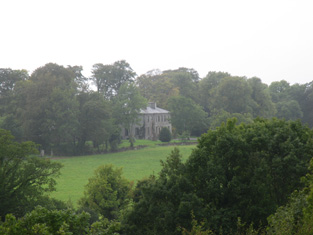
|
| Bellevue | The description in the National Inventory of Architectural Heritage records the building of this house as circa 1820 and that it was the home of the artist Douglas Alexander (1871-1945), one of three brothers who were prominent Quaker merchants in the city of Limerick. At the time of Griffith's Valuation Bellevue valued at £35 was occupied by William Alexander. Another house occupied by James Alexander and valued at £31 stood close by. Both houses were held from the Marquis of Lansdowne. Later this house was the home of the Cleeves family, toffee makers. |

|
| Bellevue | Hajba writes that William Glissan sold this property to Thomas Dennehy of Clashmore, county Waterford. Bellevue was the home of Thomas Denehy in the first half of the 19th century, inhabited by him in 1814 and 1837 and by Daniel O'Neill in the early 1850s who held it from Thomas Denehy. The house was valued at £35. Later the home of the Dunleas, now a ruin. |
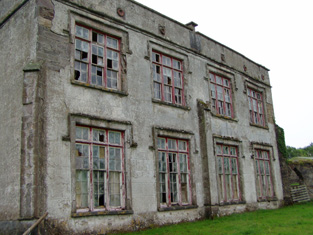
|
| Bellevue (Lismore) | Paul Shewcraft was leasing this property from the Devonshire estate in 1851 when it was valued at £19 10s. | |
| Bellevue (Passage West) | In 1850, Nicholas Parker was leasing this property from the deVesci estate when it was valued at £33 10s. It is shown on the 25-inch Ordnance Survey map of the 1890s in a much enlarged form but was subsequently demolished to make way for the terrace of houses which now occupies the site. | |
| Bellevue/Lisreaghan | Belview was the main seat of the Laurence family in east Galway. Wilson, writing in 1786, refers to "Belle-view" as the seat of Mr. Lawrence "with beautiful plantations". In the 1850s it was valued at £42 and was occupied by Walter Laurence jun. In 1906 it was the property of Rev. Charles Lawrence. It is no longer extant but a famous gateway, erected in support of the Volunteers of 1782, is still visible. |

|
| Bellew's Grove | Slater refers to Bellew's Grove as a seat of Lord Grey de Ruthin in 1894. It was held by Mrs. Bellew at the time of Griffith's Valuation and valued at £30. Buildings still exist at the site. | |
| Bellfield Cottage | Bellfield Cottage, valued at £6, was the residence of Michael E. Murphy at the time of Griffith's Valuation. A house is still extant at the site. | |
| Bellgrove | The home of the Leonard family in the first half of the 19th century. The Ordnance Survey Name Books refer to Geoffrey Leonard as the proprietor in 1840 but note that the house was not inhabited. It was held by Denis Leonard in fee at the time of Griffith's Valuation when the buildings were valued at £25.10 shillings. This house was unoccupied at the time of the 1852 sale. It appears to have been bought by Hyacinth Richard Daly, who advertised it for sale again in 1863. The sale rental states that the dwelling house was in "an unfinished state". Bellgrove no longer exists. | |
| Bellgrove House | Described in the Ordnance Survey Field Name Books as a small house with a demesne of 115 acres. Occupied in 1837 by O. Irwin and the residence of John C. Davis at the time of Griffith's Valuation. Demolished in the mid 20th century. | |
| Bellmount | Bellmount, Innishannon was the residence of the Reverend James Crowley in 1814. T. Herrick was the proprietor of Bellmount in 1837 along with a large flour mill. The mill and house were in the possession of Patrick Howard at the time of Griffith's Valuation and held from John E. Herrick. The house was valued at £18 and the mill at £65. The mill building, though now disused, is still extant. |
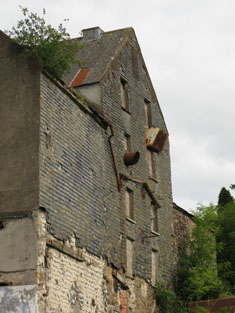
|
| Bellpark | Occupied by T. Robinson in 1837. The Ordnance Survey Name Books record Eyre C. Baldwin as the proprietor in 1840. It was occupied by Thomas Goold in the early 1850s. Goold held the house valued at £17+ with 116 acres from Denis Leonard and was the tenant at the time of house of the 1852 sale. A house is still extant at the site. | |
| Bellville | The Fleming family were known to be at Bellville from the early 18th century. The house is named on the first edition six inch Ordnance Survey map (publ. 1837) and located facing two forts in a sizable demesne. Belville was the home of A. Fleming in 1814 and of Captain A. Fleming in the 1830s. By the 1850s, the occupant was Jane Kenny who held the property valued at £7 from Major General Fleming. At the beginning of the 20th century Bellville was the home of the Meikle family, originally from Scotland. It is still extant. | |
| Bellwood | The Reverend Archer was living at Greenwood in 1814. Bellwood is the name given to the house marked in this townland on the first edition Ordnance Survey map. Henry Lysaght was the occupier at the time of Griffith's Valuation holding the house valued at £11+ from Sir John C. Carden. This building is still a residence. |
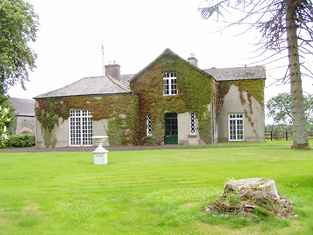
|
| Belmont | Home of the Blakes in the late 18th century and first half of the 19th century. Wilson refers to it as the seat of John Blake in 1786. Recorded as a steward's house at the time of Griffith's Valuation when it was held by James D. Meldon from the Bishop of Tuam. The original house is now a ruin. |
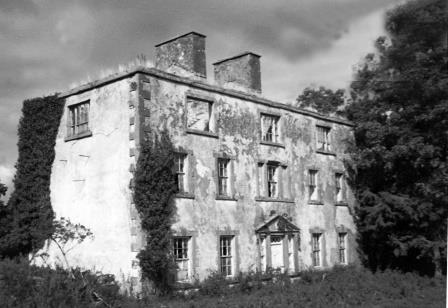
|
| Belmont | Bellmont was the residence of Thomas Grady in 1814 and of Captain Stackpoole in 1837. At the time of Griffith's Valuation it was occupied by John White who held it from Thomas William O'Grady. It was valued at £28 at this time. By the 1870s George Sampson was living at Belmount, Castleconnell. | |
| Belmont | Reverend Arthur Rowan was leasing Belmont from Arthur Chute at the time of Griffith's Valuation, when it was valued at £40. Lewis records it as the seat of Reverend A.B. Rowan in 1837. The Ordnance Survey Name Books suggest the house was built by his father in 1826 and cost £1500. However, Bary states that the house, in common with other houses in the vicinity, was built by Peter Thompson in the 1820s, when he was Treasurer of County Kerry. It is still extant and occupied. |
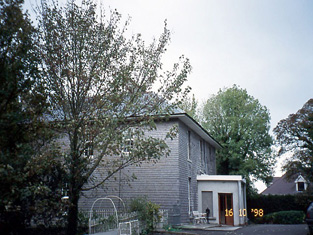
|
| Belmont | At the time of Griffith's Valuation Mary Anne Walsh was leasing a property valued at £17 to Hugh Byrne at Drumsna, barony of Leitrim. In June 1883 Gerald F. Walsh offered for sale the property in Drumsna known as Belmont. Modern housing now occupies the site. | |
| Belmont (Inishannon) | James Corker was leasing this property to Frederick Meade at the time of Griffith's Valuation, when it was valued at £16 10s. Lewis refers to it as the seat of Major Meade in 1837. It is still extant and occupied. |

|
| Belmont House (Ballynakill) | Sir Samuel Roberts was leasing this property from Nicholas M. Power in 1848 when it was valued at £37 6s. In 1837, Lewis noted the property as the seat of J. Roberts. | |
| Belmount (Raphoe North) | Robert Lowry was leasing this property from William Clarke's estate at the time of Grffiths Valuation in the 1850s, when it was valued at £25. The property was extant until the 1990s when modern housing was constructed on the site. | |
| Belmount House (Kilculiheen) | Held in fee by Sir Henry Barron at the time of Griffith's Valuation, when it was valued at £100. Labelled as Belmount House on the first edition Ordnance Survey map but as St. Patrick's Institution on the later 25-inch edition. Institutional buildings still exist at the site. | |
| Belrose | A house which, according to the National Inventory of Architectural Heritage, was built c.1860. The land was owned by John Hawkes at the time of Griffith's Valuation. It is still extant and occupied. |
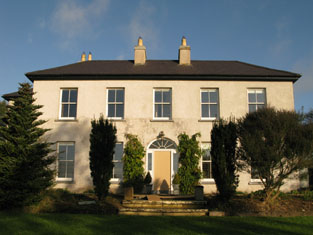
|
| Beltany | David Wilson was leasing this property from the Ecclesiastical Commissioners estate at the time of Griffiths Valuation in the 1850s, when it was valued at £17. It is now a ruin. | |
| Beltra Rectory | This house, part of the Irwin estate, was on perpetual lease from the Cooper estate. It principally functioned as the local rectory. At the time of Griffith's Valuation the property was occupied by Rev. St.George Knox and was valued at £13. |

|
| Belvidere | This house was unoccupied in 1814. Mrs Maria Peard was the occupier in the mid 19th century holding the property from Henry Peard, it was valued at £15.12 shillings. Hajba writes that the Peards sold the estate to the Pope family who occupied the house until the early 20th century. |
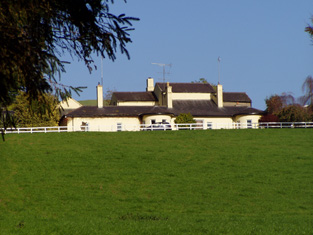
|
| Belview House | Arthur Mahony was leasing a property valued at almost £4 from the Kenmare estate at the time of Griffith’s Valuation. In 1906 it was part of the Kenmare estate and valued at £5 5s. Bary states that this house, very close to the lake shore, was built by James Mahony, of the Dunloe Castle family, in the latter half of the 18th century. In the 1930s, it was still part of the Kenmare estate and Lord Castlerosse supervised the building of Killarney Golf Club here. The original house was demolished to make room for a new clubhouse. | |
| Belview/Bellevue | A home of the Yielding family, occupied by Richard M. Yielding in 1814 and 1837 and by Timothy Hartigan who held the property from James Barry at the time of Griffith's Valuation. The buildings were valued at £13 at that time. Bought by the Delmeges in the early 1850s. The original house is not extant. | |
| Belville | An Orme home in the first half of the 19th century. Described in 1942 by the Irish Tourist Association surveyor as a large house near the church at Ballyglass, formerly owned by the Orme family and "purchased some years ago by Mr MacDonald, Kilfian. It has remained unoccupied...", due to a popular belief among the local people that the house was haunted. It is no longer extant. | |
| Belville (Banagh) | John Bustard held this property in fee at the time of Griffith’s Valuation, when it was valued at £13. It continued to be associated with the Bustard family throughout the nineteenth century. Though a building is shown at the site on the 1st edition Ordnance Survey map it has been substantially expanded by the publication of the 25-inch edition map and is labelled Belville. In 1906 the property here owned by George Bustard was valued at £13. It is still extant. | |
| Belville (Iveragh) | James Butler was occupying this property at the time of Griffith's Valuation, when it was valued at £9 15s. Both Lewis, in 1837, and Leet, in 1814, record it as the seat of Whitwell Butler. Bary states that it was probably built by Whitwell Butler in the late eighteenth century. In 1906 the property was owned by Arabella Butler and was valued at £8 5s. It continued to be used by the family until the end of the twentieth century but is now unoccupied and in poor repair. |

|
| Belville (Kilmacshalgan) | According to McTernan, Belville was built by Peter Rutledge on the occasion of his marriage to Catherine Ormsby in 1808. The house was occupied in the 1830s by James Rutledge. At the time of Griffith's Valuation, it was occupied by Margaret Ormsby Ruttledge, leasing from the Cooper estate and was valued at almost £4. By 1876 it was the seat of Robert McMunn who owned 582 acres in county Sligo. It was partly demolished in the twentieth century. | |
| Belvoir | Belvoir was an early 19th century house on the same site as an earlier building. It was the home of the Wilson family, valued at £32 in the mid 19th century. The house was burnt in 1888 when leased by the Wilson Lynches to Lady Loftus. It was not rebuilt though recorded as the seat of Maj. Wilson Lynch in 1894. Members of the Wilson Lynch family continued to live in the remaining wing until the mid 20th century. It is now a ruin. |
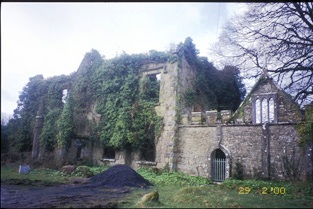
|
| Belvoir (Sligo) | ||
| Belvoir (Sligo) | Wilson refers to Belvoir, situated on the other side of the Garavogue river from Hazelwood, as the seat of Mr. Ormsby in 1786. By the time of Griffith's Valuation, the property here is held by John Wynne and referred to as "a servant's house", valued at £2 15s. Buildings are still extant at the site. | |
| Benada | The Jones had a house here in the eighteenth century as Wilson refers to Banada as the seat of Mr. Jones in 1786. It was held in fee by Rev. Daniel Jones at the time of Griffith's Valuation when it was valued at £17. In 1858 it was transferred to the Sisters of Charity who ran a girls' school and orphanage there. In the twentieth century it became a secondary school and continued in that role until 2004 when it was sold to a private developer. |

|
| Benlevy Lodge | A lodge situated close to the shore of Lough Mask and to the Lynch's house at Petersburg. Ocuppied by J. Blake in 1837 and by the Reverend E.G.O'Grady at the time of Griffith's Valuation. The remains of the lodge are still visible. |

|
| Benmore | In 1778 this was a Daly property and in 1786, Wilson also refers to it as the seat of Mr. Daly. In 1824 Mr. O'Connor was listed as a non-resident proprietor in county Galway. The OS Name Books record the proprietor of Benmore as Hugh O'Connor with a Mr. Dowdall acting as his agent in the 1830s. In 1855 Valentine O'Connor Blake was leasing 584 acres and buildings valued at £8 in the townland of Benmore, parish of Grange, barony of Loughrea, to Denis Deely. The original house does not appear to be extant. | |
| Bennett's Court | The Bennetts were resident at Ballymore from the 18th century but this house dates from about the 1840s. At the time of Griffith's Valuation it was the residence of Joseph H. Bennett who held it in fee. The buildings were valued at £41. Owned by a religious order in the 20th century and now in use as a medical clinic. |

|
| Bennetts Grove | Leased by Francis Bennett to William Beazley at the time of Griffith's Valuation, when it was valued at £13 10s. Lewis refers to it as the seat of Herbert Gillman in 1837. In 1814 it was the seat of Francis Bennett. The original house seems to have been replaced by farm buildings. | |
| Benvoy | Mrs. Catherine Power held Benvoy in fee at the time of Griffith's Valuation, when it was valued at £15 5s. In 1814 William Power was resident at Benvoy. There is still a house at this site. | |
| Bermingham/Birmingham House | An 18th century house which was originally the seat of the Bermingham family, Barons Athenry and Earl of Louth. Occupied by Richard D'Arcy in 1814 and uninhabited in 1837. It was leased to John Irwin Dennis the following year and bought by him in 1851 from Clifford Trotter. Since then the house has been the home of the related families of Dennis, O'Rorke and Cusack Smith. The house and demesne were advertised for sale early in 2007. The Clonbrock Estate Papers, Collection List 54 in the National Library contain early 19th century rentals of the Bermingham estate. |

|
| Berry Hill | The National Inventory of Architectural Heritage states that this house dating from circa 1700 was a dower house for the Barrymore family of Castlelyons Castle. By the mid 19th century it was in the possession of the Perrott family and occupied by the Reverend Philip Berry who held the buildings valued at £21 with 15 acres. This house is still occupied. |
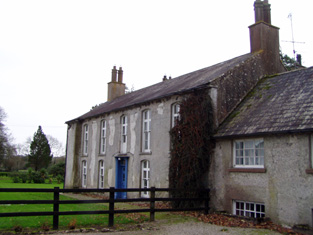
|
| Berry Hill | A house occupied by George Scott at the time of Griffith's Valuation, held from James Morrough and valued at £14. The home of Patrick Ronayne in the 1870s. This house is still a residence. |

|
| Berry Lodge | A house on the Stacpoole estate, occupied by Francis Woulf in 1814 and by a member of the O'Dwyer family in the mid 19th century. This house is still a residence. |

|
| Berrymount | Berrymount House is named on the first edition six inch Ordnance Survey map (publ. 1837). James Berry was resident in the first half of the 19th century. He held the house and outbuildings valued at £7 from the representatives of John C. Jones. William Berry of Berrymount owned 134 acres in co Cavan in 1876. The Berrys were selling Berrymount in the early 1890s (Irish Law Times and Solicitors Journal, Vol 27, 615). Alexander Morton and family were living at Berrymount in the early 20th century. The house appears to be still extant. | |
| Besborough | In the 1770s the residence of Allen Esq. The seat of the Pike family for most of the 19th century. Occupied by J. Spence in 1814 and by Ebenezer Pike in 1837 and in the early 1850s. He held the property from the representatives of Bousfield and the house was valued at £78. This house was used as a convent in the 20th century. http://www.askaboutireland.ie/reading-room/history-heritage/big-houses-of-ireland/bessborough-house-and-est/index.xml | |
| Besborough | Occupied by Reverend Theobald Butler in 1837 and still in his possession at the time of Griffith's Valuation. He held the property from Letitia Hickman and it was valued at over £22. By the 1870s this house was the home of Robert William Cary Reeves and it was still in his possession in 1906. Later in the 20th century the house became the home of the Hassett and Sexton families. | |
| Bessborough | In 1814 this house was occupied by John Mahon and in 1837 by T. Sadlier junior. The Ordnance Survey Name Books indicate that the proprietor was Mrs. Harding of Dublin and describe Bessborough as " a most beautiful house, occupied by Mr. Cushin, solicitor". By the time of Griffith's Valuation Dr John Armstrong was resident. He held the property from Mrs Harding and the buildings were valued at £20+. Jonathan Harding of Bessborough, Nenagh owned 163 acres in the 1870s. Slater refers to this house as the residence of David E. Young in 1894. It is still in use as a residence. |
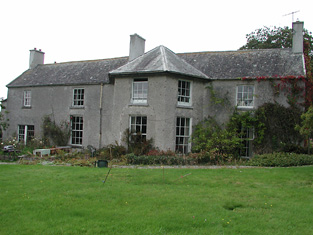
|
| Bessbrook | The original house with a mill was located in the townland of Roosky. The present house in the neighbouring townland of Killygorman, is not marked on the 1st edition 6 inch Ordnance Survey Map (1836) but by about 1860 it was valued at £35, occupied by David Hamill and held from the Reverend Quinn and others. The Hamills were still resident in the early years of the 20th century. Family members were described as farmer and mill owner. | |
| Bessmount Park | The original house ‘Bessmont’, sometimes spelt Bessmount, dates from the early 1800s and is marked and named on the 1st edition 6 inch Ordnance Survey map (1836) with a walled garden to the south. It was the home of a branch of the Montgomery family and was inherited through marriage by the Nixons. In the 1830s it was the residence of A. Nixon Montgomery. In 1840 it was acquired by John Hatchell, High Sheriff of Monaghan in 1843 and his daughter held the house in fee circa 1860. The buildings were valued at £46. The house was elaborately re-modelled in an ornate style possibly to the design of an unknown architect in the late 1860s for the owner William Henderson and became known as Bessmount Park. William Henderson was married to John Hatchell’s daughter Frances Maria Isabella. Mrs Henderson, described as a widow, was living in the house in 1901 and a retired doctor Edward Taylor in 1911. This house continues to be a fine residence. |

|
| Betsborough | At the time of Griffith's Valuation, Adam Newman was leasing this property to Henry Newman, when it was valued at £19 5s. It is still extant. Family history records for the Sweetnam family indicate that Samuel Sweetnam took over Betsborough while Thomas Sweetnam was agent to the Newman estate. Henry Newman of Betsborough, Skibbereen, owned 877 acres in the 1870s. | |
| Betty Ville House | This house is marked on the first edition Ordnance Survey map. Located on the Blakiston estate, it was occupied by John Shaughnessy in the mid 19th century and held from the Messrs Young. It was valued at £5. |

|
| Bettyfield | Recorded as the seat of Sir John Conroy or O'Mulconry in the Ordnance Survey Field Name Books. Arthur O'Connor was the main tenant in the townland of Shankill at the time of Griffith's Valuation. | |
| Bettyville | Occupied by John Lee in 1814 and held by his son William Norris Lee in fee at the time of Griffith's Valuation and valued at £11+. Fitzgerald describes Bettyville in the 1820s as a 'handsome thatched cottage' occupied by Captain John Franklin. This house was the home of the Revrend John T.N. Lee and valued at £13 in 1906. | |
| Bettyville | Charles Bastable lived here in the early years of the 19th century. The house was occupied by John Therry in 1837 and in the mid 19th century, when valued at £11 and held from Anne Westropp. Bettyville was part of the Creagh estate for sale in July 1853 when it was held by the representatives of Thomas Bennett. Very little remains of this house. | |
| Bettyville | The home of the Nason family in the early 19th century, occupied by Richard Nason in 1814 and 1837. By the early 1850s William Corbin was resident holding the house valued at £14.10 shillings from the representatives of Richard Nason. William Corbin was still living at Bettyville in the 1870s. This house is no longer in existence. | |
| Bettyville | At the time of Griffith's Valuation, a house at Cloonlahan, barony of Longford, valued at £5 together with over 300 acres was held by Michael McDermott. | |
| Bewley | Captain Wiliam Chearnley was leasing this property to Geoffrey Norris at the time of Griffiths Valuation when it was valued at over £9. A farm is still extant at the site. | |
| Bilberry Hill | In 1786 Wilson writes that Bilberry Hill was the residence of the late Mr. Drury. It was the home of the Garde family in the nineteenth century, occupied in 1814 by William Garde and in the early 1850s by Winifred Garde. She held the property from Sir A. Brooke and the buildings were valued at £8.15 shilllings. The 25-inch Ordnance Survey map shows a later and larger building labelled Bilberry, which is still extant. |
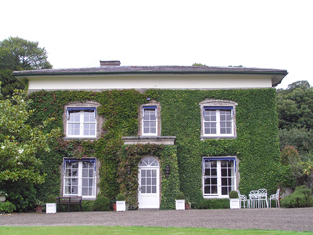
|
| Bilberry Hill | William Stanford of Bilberry Hill was High Sheriff of county Cavan in 1774. This house was the home of the Irwin family from at least 1790 when Daniel Irwin of Bilberry Hill married a Miss E. Faris of Cloncorick. Leet records David Irwin as resident in 1814 and Jane Elvin [Irwin] was the occupant in the 1850s holding the property valued at £10.10.0. from Thomas Irvine [Irwin]. Jane Irwin died at Bilberry Hill in 1876 (Cavan Weekly News, 28 July 1876). The Irwins were succeeded by the Berrys of Berrymount to whom they were related. This house is no longer extant. | |
| Bilboa Court | Built in the last decade of the 17th century by the Reverend Dean Story. It was later occupied by Colonel Wilson. Lewis refers to Bilboa House as the property of the Earl of Stradbroke. It was "nearly in ruins", was built "wholly of brick from Holland" and was formerly the residence of Colonel Wilson. Circa 1840 the Ordnance Survey Name Book records a three-storey ruin with about 40 windows which had been falling into decay since about the 1770s. |
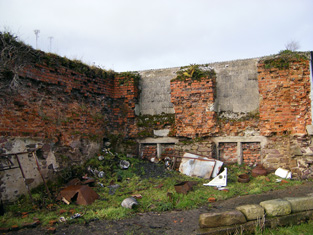
|
| Billeragh House | Robert Hilliard was leasing this property from Thomas Dennis at the time of Griffith's Valuation, when it was valued at £9 10s. Leet notes it as the residence of Mr. Hilliard in 1814. |
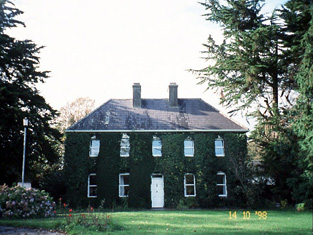
|
| Billis Grange | A house built after the first edition six inch Ordnance Survey map (publ. 1837) was surveyed. Mrs D. Delap was the owner and occupier in the mid-19th century when the buildings were valued at £13. There is a reference to W.C. Peyton of Billis Grange in a document in the Farnham Papers, Ms 11,499 (NLI). The building was possibly extended towards the end of the 19th century. The National Inventory of Architectural Heritage dates the present house c. 1890. The 25 inch map shows a substantial house in parkland with a lodge at the entrance gate. In 1906, Henry Sankey held over 300 untenanted acres in this locality including a building with a rateable valuation of £16.10.0. This house continues to be a family residence. |
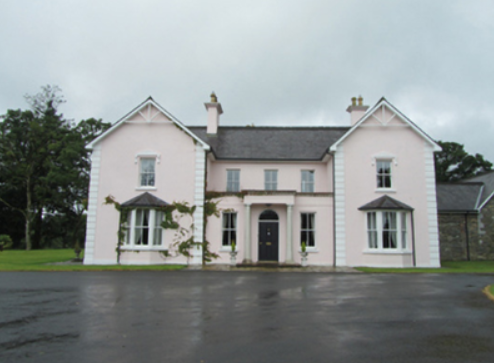
|
| Bingarra | Occupied by James Clarke in the mid 1850s, leasing from the Bodkin estate and advertised for sale in Nov 1855. Modern buildings exist at the site now. | |
| Bingfield | A house built in the mid-18th century by the Venerable Joseph Story, Archdeacon of Kilmore. Occupied by Joseph Story in the mid-19th century, when the buildings were valued at £40. The property was held from Anthony O’Reilly. The Story family were still resident in 1901. Bingfield was sold by Arthur Patrick Story [sometime in mid-20th century, Irish Family Records (1976)]. Many of his siblings went to live in New Zealand. This house is still a fine residence. |

|
| Bingham Lodge | The main residence of this branch of the Bingham family located beside the sea. It is labelled as Bingham Lodge on the 1st edition Ordnance Survey map and a much enlarged building is thus labelled on the 25-inch map of the 1890s. It was in the possession of Henry Bingham at the time of Griffith's Valuation when it was valued at £10 10s. Remains of the walled garden can still be seen at the site. | |
| Bingham's Castle | Early 19th century building, abandoned by the Binghams circa 1925. It was held in fee by Anne Bingham at the time of Griffith's Valuation, when the buildings were valued at £20. Almost nothing remains at the site now. | |
| Binghamstown House | Built 1796 by Major Denis Bingham and let to Dean Lyons in the 1820s. At the time of Griffith's Valuation, it was valued at £13 15s and occupied by Luke Lyons. It was still owned by a descendant of the Bingham family in the mid 1990s. A house is still extant at the site. | |
| Binnion House (Inishowen) | ||
| Binnion House (Inishowen) | The Lord Bishop of Derry & Raphoe was recorded as the lessor of Binnion in the 1860s, when it was valued at £10 and occupied by Anne Lohery. It is labelled Binnion on the 1st edition Ordnance Survey map and as Binnion House on subsequent editions. A house is still extant at the site. | |
| Birch Grove | At the time of Griffith's Valuation Thomas Brabazon was leasing a property valued at £10 at Beagh, barony of Moycarn, county Roscommon, to Ellen O'Shaughnessy. In 1837 Lewis records Birch Grove as the residence of J. O'Shaughnessy. Referred to as the residence of J.J. O'Shaughnessy in 1894. A house is still extant at the site. | |
| Birchfield | Birchfield was the residence of Cornelius O'Brien in 1814 and in 1837. Lewis also refers to the erecting of an ornamental building in castellated style for the accommodation of visitors on the top of the cliffs [of Moher] by Cornelius O'Brien. The house was valued at £50 at the time of Griffith's Valuation. By the mid 1870s Birchfield belonged to Cornelius Alexander Keogh. It is now a ruin. | |
| Birchgrove | The home of the Birch family, occupied by George Birch in 1814. In 1837 Lewis writes that Birchgrove was the seat of J. Birch and that some additions were made to the house by the "late Mr Elsam". The 1835 map of Birchgrove includes a small pen and ink drawing of the house. Griffith's Valuation records George Birch as the occupier holding the house valued at £27+ and his distillery valued at £66 from the Earl of Portarlington. In 1910 Birch Grove was the home of Edward Robert Birch, eldest son of James Sayce Birch and his wife, Mary Warburton. This house on the outskirts of Roscrea is still a residence. |
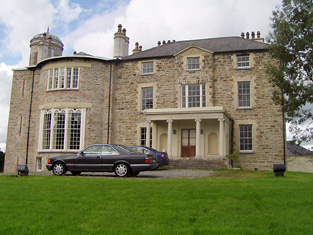
|
| Birchhill Cottage/Birchhill House | This house was occupied by John Travers at the time of Griffith's Valuation. He held it from Francis Wyse and it was valued at £10.10 shillings. Jane Clerke occupied a mansion house valued at £20 in this townland in 1906. It is labelled Birchhill Cottage on the 1st edition Ordnance Survey map but as Birchhill House on the 25-edition of the 1890s. A house is still extant at the site. | |
| Bird Hill | A house located on the outskirts of Clonmel town was the residence of a member of the Taylor family in 1837. At the time of Griffith's Valuation this house valued at £10.12 shillings was occupied by Margaret Cantwell and held from Stephen Moore with 7 acres of land. This house is still in use as a residence. | |
| Birdhill | This house was originally the home of a branch of the Going family. Leet records Richard Going as the occupant in 1814. He was murdered in 1821. S. H. Atkins was resident in 1837. In 1840 the Ordnance Survvey Name Books note it as the seat of John Going and describe it as "a commodious dwelling house" with a demesne consisting of "plantation and ornamental ground". At the time of Griffith's Valuation, John Going was also the occupier when he held the house, valued at £40, with 51 acres and the national school, from Mrs Margaret Ormsby [nee Atkins]. She left Birdhill to her nephew George Twiss. Birdhill was burnt in the early 1920s and is now a ruin. | |
| Birdhill (Kyle) | Christopher Kayes held a house and offices valued at £27.18 shillings with 231 acres from Mrs Margaret Ormsby in the townland of Birdhill at the time of Griffith's Valuation. These would appear to be located south west of Birdhill House and just east of Kyle burial ground. | |
| Birdstown House | At the time of Griffiths Valuation in the 1850s Peter Maxwell was occupying Birdstown, when it was valued at £50, and leased from the Marquis of Donegall's estate. In 1837 Lewis referred to it as the seat of Reverend P.B. Maxwell. His son, Reverend Robert W. Maxwell, was the occupier in the 1870s. The National Inventory of Architectural Heritage states that the house burnt down in 1984 but stables and other estate buildings are extant. | |
| Bishop's Island | Grice Richard Smyth held buildings valued at £25 in the townland of Bishop's Island at the time of Griffith's Valuation. ''Burke's Irish Family Records'' refers to his father Henry Mitchell Smyth of Bishop's Island. In 1786 Wilson notes Bishop's Island as the seat of Mr. Mitchell. | |
| Bishopstown (Upperthird) | At the time of Griffith's Valuation, Catherine Hally was leasing this property, valued at £11, from the Trustees of Waterford College. Modern buildings exist at the site now. | |
| Blackfort | William Molloy was resident in 1814 and W. Minnett in 1837. Blackfort was advertised for sale in May 1851 by the Reverend David Fitzgerald, Edward Galwey was the petitioner. By the time of Griffith's Valuation Edward Galwey held Blackfort, or Lisduff as it became known, in fee. The buildings were valued at £15.10 shillings. Edward Galwey of Lisduff, Nenagh, owned 245 acres in county Tipperary in the 1870s. Richard Galway occupied Blackfort in 1906 when the house was valued at £22+. |
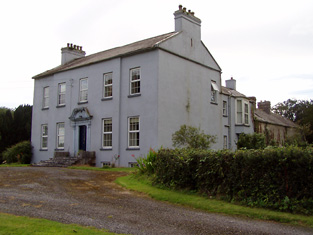
|
| Blackhorsefield | Rev. Francis Stawell was leasing this property to Eugene Sweeney at the time of Griffith's Valuation, when it was valued at £16. Changes seem to have taken place at the site by the time of the 25-inch Ordnance Survey map of the 1890s. A school occupies this location now. | |
| Blackrock | In 1906 the house at Blackrock was owned by John W.L. Birchall and was valued at £10. Arthur J.V.L.Burchall was occupying the house at the time of Griffith's Valuation when it was also valued at £10. There is still an occupied house at this site. | |
| Blackwater House | Home of the McAdam family in the 19th century before they moved to live in Sussex. The house was valued at £16 in the mid 19th century and was the residence of Philip McAdam. In 1894 Slater refers to it as the residence of Mrs. Caswell. Also known as Springhill House, it is now demolished. | |
| Blackwater Vale | This house is marked on the 1st edition 6 inch Ordnance Survey map (1836) and located just outside the town of Monaghan. The building was expanded in the mid-19th century. Griffith’s Valuation records the buildings valued at £13 when the house was occupied by Thomas E. Wright who held the property from William and Charles Crofton. At the beginning of the 20th century Blackwater Vale was occupied by Foster Dunwoody, a solicitor. Still extant and occupied. |
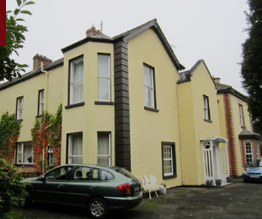
|
| Blair's Cove | At the time of Griffith's Valuation, this property was held in fee by Richard L. Blair and valued at £20. In 1837 Lewis had noted it as the seat of R.L. Blair. Leet refers to it as the seat of Cornelius O' Connor in 1814. It was offered for sale, as part of the Blair estate sale, in April 1866 when it was noted that "with judicious outlay in repairs it might be rendered very comfortable". The house is still extant and now houses a restaurant and luxury accommodation. See www.blairscove.ie |

|
| Blake Hill | A house on the estate of the Provost and Fellows of Trinity College, Dublin, occupied by the Blakes of Menlo in the late 18th century/early 19th century. Thomas Blake of Brendrum, county Galway, married Mary Lynch, granddaughter of Sir Roebuck Lynch Blosse, 2nd baronet, and they were the parents of the 9th and 10th Blake of Menlo baronets. By the time of Griffith's Valuation the most valuable house in the townland of Breandrim was a herd's house of £4.15 occupied by C. B. Kenny. On the 25-inch edition Ordnance Survey map of the 1890s Breandrim House is recorded as "in ruins". Old yard walls remain at this site. |

|
| Blake's Lodge | Built prior to 1838, this house may have been a sporting lodge or steward's house of the Blakes. At the time of Griffith's Valuation, the townland of over 100 acres was owned by Patrick Blake but no buildings are recorded. It is not labelled on the 25-inch Ordnance Survey map of the 1890s and Robinson writes that only the orchard walls remain. | |
| Blanket Nook | Messers Brassey and McCormack held this property in fee at the time of Griffiths Valuation in the 1850s when it was valued at £13. It is described as a steward’s house. The National Inventory of Architectural Heritage dates its building to the mid -1840s, contemporary with the massive reclamation of land from the sea which took place in the area at that time. Blanket Nook is still extant. |

|
| Blarney Castle | The original 15th century castle belonged to the McCarthys of Muskerry. In 1786 Wilson describes Blarney as the "very fine seat, with ample and beautiful demesnes, of Mr. Jeffreys". Lewis wrote in 1837 that Blarney Castle was purchased in 1701 by Sir James Jefferyes, Governor of Cork [from the Hollow Sword Blades Company] who “ soon after erected a large and handsome house in front of it, which was the family residence for many years, but is now a picturesque ruin”. A new house was built in 1874 on the demesne lands by the Colthurst family and is still occupied by them. |

|
| Blayney/Hope Castle | Originally known as Blayney Castle, this building was a late 18th century three storey five bay Georgian block in the town of Castleblayney. Lewis described it in the 1830s as ‘a handsome modern edifice, built near the site of the old castle’. It was the home of the Lords Blaney until sold in 1853 by the 12th and last Baron. Bought by Henry T. Hope and in his possession and that of his daughter’s descendants the Clintons until 1916 when it was sold. Since then the building has been a military barracks, a hospital in the 1930s and then a convent until the 1970s. In more recent times it was run as a hotel until badly damaged in an arson attack in 2010, since then it has been unoccupied. Owned by Monaghan County Council since the 1980s. |
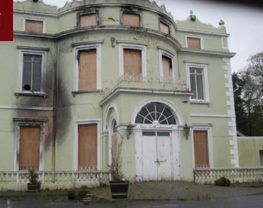
|
| Bleach | At the time of Griffith's Valuation, Charles Graves was leasing property from the Villiers-Stuart estate which included a house and mill. The complex was valued at over £37. By the later nineteenth century Bleach House is shown here but the mill in not shown. A house is still extant at the site. | |
| Blenheim (Gaultiere) | Miss Eliza Ridgeway was leasing this property from the Beresford estate in 1848, when it was valued at £29 18s. It is still extant and occupied. |
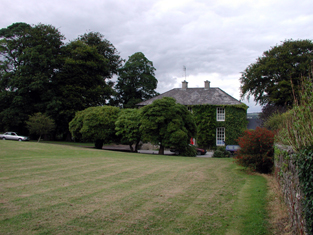
|
| Blenheim House | At the time of Griffith's Valuation, Robert Carroll was leasing this property from Eliza Ridgeway when it was valued at £20. It is still extant and occupied. It is named as Blenheim House on both the 6-inch and 25-inch Ordnance Survey maps though it now seems to be known as Blenheim Lodge. |
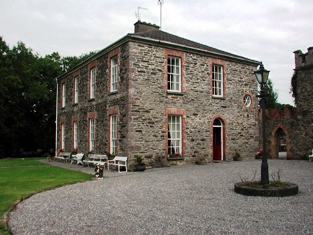
|
| Blenheim Lodge | Leased by Roger Sweetman from Lord Waterford's estate at the time of Griffith's Valuation, when it was valued at £35.Lewis refers to it as the seat of Pierce Sweetman in 1837. It is still extant and operated as a guesthouse known as Blenheim House. |

|
| Blenheim Lodge |

